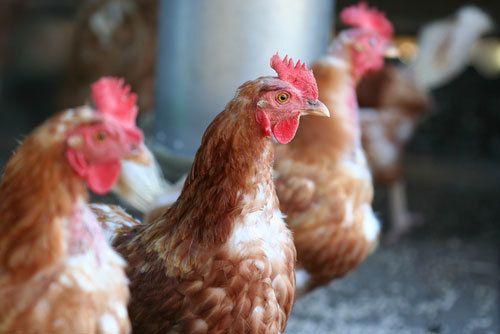Rise in H5N6 bird flu may be explained by more-infectious variant, experts worry

China has reported 21 cases of the H5N6 subtype of bird flu this year, compared with only five last year, leaving experts concerned that the strain currently circulating is more infectious than past versions of the virus, Reuters reported.
Scientists first identified H5N6 avian influenza in poultry in Laos in 2013, according to a 2020 report in the journal Emerging Infectious Diseases (EID). And since 2014, a total of 49 confirmed cases of humans infected with H5N6 have been reported to the World Health Organization (WHO), according to the WHO's Avian Influenza Weekly Update.
The 21 cases reported in China this year have resulted in at least six deaths and left many of the remaining infected people critically ill. "The increase in human cases in China this year is of concern. It's a virus that causes high mortality," Thijs Kuiken, a professor of comparative pathology at Erasmus University Medical Center in Rotterdam, Netherlands, told Reuters. According to the EID report, human H5N6 infections have a 67% mortality rate.
Related: Going viral: 6 new findings about viruses
The WHO has confirmed that, among the 21 infected individuals in China, most came into contact with poultry, and there have been no confirmed cases of human-to-human transmission, Reuters reported.
"Currently available epidemiologic and virologic evidence suggest that A(H5N6) influenza viruses have not acquired the ability of sustained transmission among humans, thus the likelihood of human-to-human spread is low," a WHO spokesperson told BNO News on Oct. 5. The spokesperson also stated that wider geographical surveillance of affected areas in China and nearby regions is "urgently required" to understand the recent uptick in human cases.
It could be that the H5N6 currently circulating is a new variant that infects humans more easily than past versions of the virus, Kuiken told Reuters. Or there may be a significant increase in H5N6 among poultry, which could result in more human exposure to the virus.
Sign up for the Live Science daily newsletter now
Get the world’s most fascinating discoveries delivered straight to your inbox.
Read more about the rise in bird flu cases at Reuters and BNO News.
Originally published on Live Science.

Nicoletta Lanese is the health channel editor at Live Science and was previously a news editor and staff writer at the site. She holds a graduate certificate in science communication from UC Santa Cruz and degrees in neuroscience and dance from the University of Florida. Her work has appeared in The Scientist, Science News, the Mercury News, Mongabay and Stanford Medicine Magazine, among other outlets. Based in NYC, she also remains heavily involved in dance and performs in local choreographers' work.











